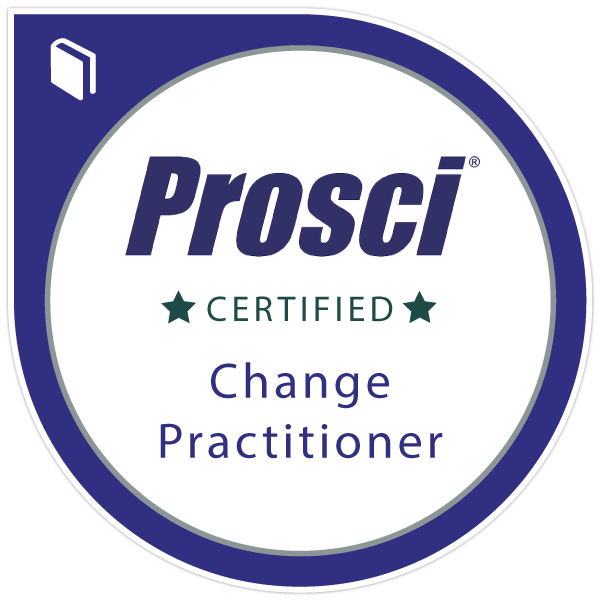Apply change management to 6x your chances of project success
Apply change management to 6x your chances of project success

I recently became a certified change practitioner through Prosci. While I have been doing change management for years, I (stupidly) didn’t complete the formal training until a couple of weeks ago and wow, was that a mistake. Several times when I was going through the training I thought, I sure wish I had known this and applied it on X project.
Change management is the people side of change. A successful project or change in a business requires three things: Leadership, Project Management, and Change Management. Without all three legs of the stool being solidly in place, the project or change will not achieve all of the benefits intended.
Prosci’s research over 20 years indicates that businesses are 6x more likely to realize the full benefits of a project or change if they apply change management strategies, tools, and methodologies.
Businesses that understand this tend to allocate the same budget for change management as they do for project management, typically 5-20% of the project budget for each of PM and CM. Some businesses think that they can address change management simply by throwing some money at communications and training. But there is so much more to change management than that.
A change doesn’t occur in a business until its people adopt the change. And what is the natural tendency of most people when faced with a change? To RESIST it. A fundamental element of change management is to proactively assess your people’s barrier points to the change, and to implement tools and strategies to manage and overcome that resistance.
That the technical requirements of the project have been implemented is only half–probably less than half–of the battle. The best technical solution in the world is worthless if your people don’t use it. Change management helps get the business ready for the change and then gives your business the best chance of getting your people to actually ADOPT the change so that your business can experience the benefits of the project.
The best way to describe the difference between project management and change management is this: PM brings the “thing” to the business, whereas CM brings the business to the “thing”. What the “thing” is doesn’t matter—a software implementation, a change in office configuration, a different sales process, a new business structure, etc.—you need both PM and CM (and Leadership) if you want the “thing” to stick.
The next time you embark on a new project in your business, make sure you create and implement a solid change management strategy to 6x your chances of realizing the full benefits of the project.



